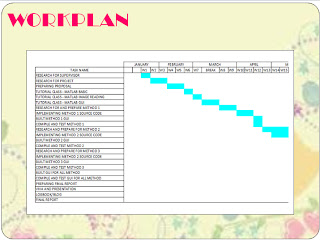Submission of Project Proposal, Progress Report and Draft for Final Report
Objective:
To submit Project Proposal, Progress Report and Draft for Final Report
Content/Result:
Project Proposal will be carry 10% and Progress Report will be carry 5% of marks for FYP Semester 2
Conclusion:
I've submitted the Project Proposal, Progress Report and Draft for Final Report to Madam Lily












